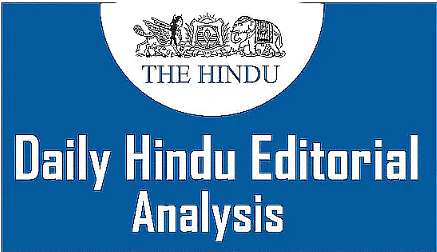UPSC Exam > UPSC Notes > Current Affairs & Hindu Analysis: Daily, Weekly & Monthly > The Hindu Editorial Analysis- 30th January 2023
The Hindu Editorial Analysis- 30th January 2023 | Current Affairs & Hindu Analysis: Daily, Weekly & Monthly - UPSC PDF Download

In NREGA reforms, prioritise the worker and her dues
Why in News?
What is MGNREGA?The Mahatma Gandhi National Rural Employment Guarantee Act (MGNREGA) is no stranger to reform. In fact, the zeal with which reforms are introduced often outpaces the capacity to adapt. Every time the administrative system gets back on its feet after a reform move, it is hit by another.
- About: MGNREGA is one of the largest work guarantee programmes in the world launched in 2005 by the Ministry of Rural development.
- The primary objective of the scheme is to guarantee 100 days of employment in every financial year to adult members of any rural household willing to do public work-related unskilled manual work.
- As of 2022-23, there are 15.4 crore active workers under the MGNREGA.
- Legal Right to Work: Unlike earlier employment guarantee schemes, the act aims at addressing the causes of chronic poverty through a rights-based framework.
- At least one-third of beneficiaries have to be women.
- Wages must be paid according to the statutory minimum wages specified for agricultural labourers in the state under the Minimum Wages Act, 1948.
- Demand-Driven Scheme: The most important part of MGNREGA’s design is its legally-backed guarantee for any rural adult to get work within 15 days of demanding it, failing which an ‘unemployment allowance’ must be given.
- This demand-driven scheme enables the self-selection of workers.
- Decentralised planning: There is an emphasis on strengthening the process of decentralisation by giving a significant role in Panchayati Raj Institutions (PRIs) in planning and implementing these works.
- The act mandates Gram sabhas to recommend the works that are to be undertaken and at least 50% of the works must be executed by them.
- Delay and Insufficiency in Funds Dispersal: Most states have failed to disburse wages within 15 days as mandated by MGNREGA. In addition, workers are not compensated for a delay in payment of wages.
- This has turned the scheme into a supply-based programme and subsequently, workers had begun to lose interest in working under it.
- There is ample evidence by now, including an admission by the Ministry of Finance, that delays in wage payments are a consequence of insufficient funds.
- Caste Based Segregation: There were significant variations in delays by caste. While 46% of payments to SC (Scheduled Caste) workers and 37% for ST (Scheduled Tribes) workers were completed in the mandated seven-day period, it was a dismal 26% for non-SC/ST workers.
- The negative impact of caste-based segregation was felt acutely in poorer States such as Madhya Pradesh, Jharkhand, Odisha and West Bengal.
- Ineffective Role of PRI: With very little autonomy, gram panchayats are not able to implement this act in an effective and efficient manner.
- Large Number of Incomplete works: There has been a delay in the completion of works under MGNREGA and inspection of projects has been irregular. Also, there is an issue of quality of work and asset creation under MGNREGA.
- Fabrication of Job cards: There are several issues related to the existence of fake job cards, the inclusion of fictitious names, missing entries and delays in making entries in job cards.
- There is a need for better coordination between various government departments and the mechanism to allot and measure the work.
- Some discrepancies in the payouts need to be addressed, too. Women in the sector, on an average, earn 22.24% less than their male counterparts.
- State governments must ensure that public work gets started in every village. Workers turning up at the worksite should be provided work immediately, without much delay.
- Local bodies must proactively reach out to returned and quarantined migrant workers and help those in need to get job cards.
- Gram panchayats need to be provided with adequate resources, powers, and responsibilities to sanction works, provide work on demand, and authorise wage payments to ensure there are no delays in payments.
- MGNREGA should be converged with other schemes of the government. For example, Green India initiative, Swachh Bharat Abhiyan etc.
The document The Hindu Editorial Analysis- 30th January 2023 | Current Affairs & Hindu Analysis: Daily, Weekly & Monthly - UPSC is a part of the UPSC Course Current Affairs & Hindu Analysis: Daily, Weekly & Monthly.
All you need of UPSC at this link: UPSC
|
63 videos|5408 docs|1146 tests
|
Related Searches















